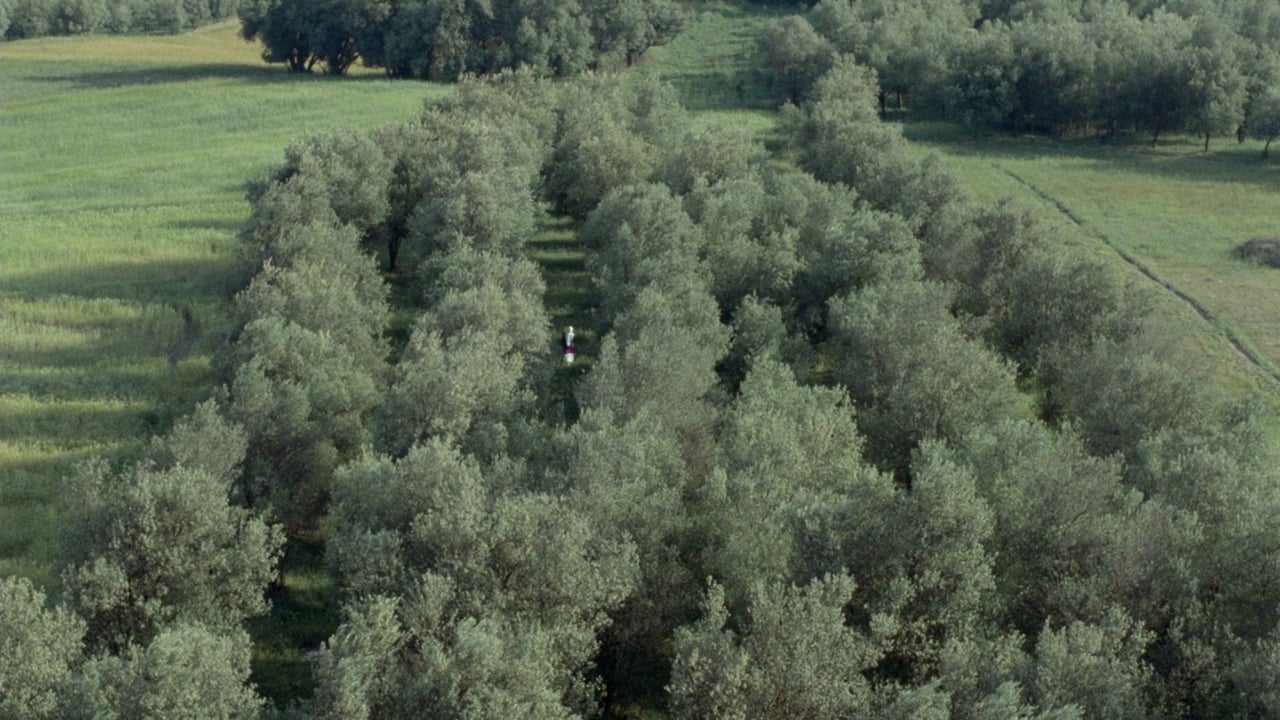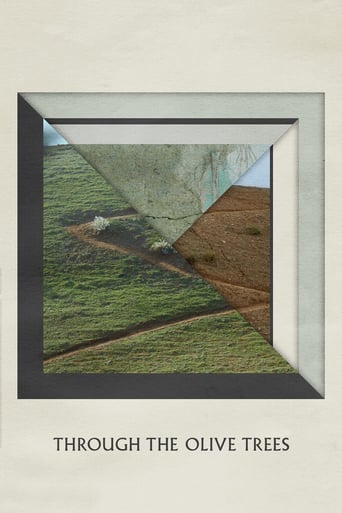

Wonderful character development!
... View MoreDisappointment for a huge fan!
... View MoreIt is a whirlwind of delight --- attractive actors, stunning couture, spectacular sets and outrageous parties.
... View MoreThe movie is made so realistic it has a lot of that WoW feeling at the right moments and never tooo over the top. the suspense is done so well and the emotion is felt. Very well put together with the music and all.
... View MoreI found this Iranian film in the book 1001 Movies You Must See Before You Die, it was an easy to remember title, but I didn't else about it, but critics gave it positive reviews, so I hoped it would be good, directed by Abbas Kiarostami (Taste of Cherry, The Wind Will Carry Us). Basically Hossein (Hossein Rezai) is a local stonemason who has become an actor, filming on location for the movie Zendegi Edame Darad (And Life Goes On). Outside the film set, Hossein makes a marriage proposal to his leading lady, a student named Tahereh (Tahereh Ladanian), she was orphaned by an earthquake. Hossein is poor and illiterate, because of this the girl's family are insulted by his proposal, and the girl avoids him as a result. Even during filming, she continues to evade him, she also seems to have trouble grasping the difference her role in the film and her real-life self. Things get more complicated as Hossein continues to pursue the affections of the young actress while the filming goes on, the Film Director (Mohamad Ali Keshavarz) learns about this and tries to advise him what to do. The girl manages to finish the scene while Hossein attempts to woo her, she departs, and Hossein runs after her. In the final scene, at a great distance, the girl finally gives an answer to Hossein, we are left with him running through a green field, and back through the olive trees, and we never know what the response is given by the girl. The documentary style of filming is interesting, the director pokes fun at the filmmaking process, with memorable take after take sequences of the lead actor going up and down a flight of stairs and messing up a line, this film blurs the lines between life and art, and it has some good sights of Iran's northlands, a reasonable drama. Worth watching!
... View More"I believe the films of Iranian filmmaker Abbas Kiarostami are extraordinary. Words cannot relate my feelings." - Akira Kurosawa Abbas Kiarostami directed "Where is the Friend's Home?" in 1987, the tale of an 8 year old boy who embarks on a quest to find his friend's house. The film took place in Koker, a village in northern Iran. The village was devastated three years later by the 1990 Manjil-Rudbar earthquake. This earthquake prompted Kiarostami's real-life return to Koker, a journey in which he attempted to locate the young stars of his 1987 film, all of whom were actual Koker residents. Kiarostami's 1992 film, "Life and Nothing More", reconstructs this journey. His 1994 film, "Through the Olive Trees", is partially about the making of "Life and Nothing More". This trilogy of films marks a larger shift in Kiarostami's filmography: a movement away from neorealism and toward postmodern self-reference.Unlike most "natural disaster movies", "Life and Nothing More" quickly forgoes condescending gestures. Kiarostami has little time for either noble sufferers or canned sorrow. Instead he focuses on two characters, an unnamed film-maker (a stand-in for Kiarostami himself) and his young son, both of whom travel to Koker in a rickety yellow car. Landslides and traffic hamper their journey, but pretty soon they arrive in Koker. They then embark on a mission to locate the two young boys who appeared in the director's "Where is the Friend's House?" Both films offer similar journeys and tell tales of, not human beings conquering adversity (both quests fail; the boy never found his friend's house, and the film-makers never find the boys), but of characters persevering despite obstacles. Climbing is thus a repeated motif, Kiarostami treating us to long-shots of vehicles trekking up mountains and characters who either push unrelentingly onward or clamber out of rubble. Kiarostami's camera lingers on debris and collapsed concrete, Koker's residents like solitary weeds sprouting weakly upwards after a drought.Later, a woman tells us she lost her home and family, but declines outside assistance. She will get by on her own. "If the dead could return," another haggard character tells us, "they would appreciate life more." This character, who plays himself playing himself, was cast in Kiarostami's previous film, where he was made to look "older and uglier". "That is not art," he states. "If you make an old man young and handsome, that's art!" "Life and Nothing More" traces something similar; an attempt to tease out something handsome and dignified amidst perpetual calamity. But this reflexivity is then complicated. The man may have been made "uglier" on film, but, as he now reveals, the previous film lied by suggesting that he lives in a house rather than a simple tent. This tension – art which ennobles, searches for truths, but also lies and perverts – increasingly obsesses Kiarostami, as his films become less neorealist, more Goddardian and more reflexive. Indeed, increasingly his films don't ask us to enter worlds but instead obsessively revolve around characters who skirt around the edges of worlds, places and actions. They are spectators like us. The car in "Life and Nothing More" is itself a glorified camera mount, shielding both us and its occupants from the outside, even as we and our heroes try in vain to establish contact with the outside world. Kiarostami's films may be structured as games of searching, finding and looking, but are increasingly about the very postmodern problem of seeing, subjectivity and the limits of knowledge. He's, in a sense, the Iranian Atom Egoyan.Postmodern cinema plays up self-reference, homage, pastiche, nihilistic self-absorption and a detachment from the social. But while Kiarostami's films increasingly call attention to themselves as representation, and are increasingly self-reflexive (they do not quote films outside of Kiarostami's filmography), they mostly lack the smug sense of self-conscious sophistication (and knowingness) which postmodernists trade in. Where central to postmodernism is the gap between the image of reality and what is reality – with the sign always victorious over essence – Kiarostami's work searches out that essence with the assumption that everything is capable of being at least somewhat true or containing truths.The third film in what is often called "the Koker trilogy" (it is also three steps meta-removed from the original film), "Through the Olive Trees" opens with a movie director (Kiarostami's surrogate) conducting a casting call. He's looking for a female villager to play the leading role in his new film. He finally selects a woman called Tehereh. She will play a bride. Off-set Tehereh is similarly courted by a man, Hossein, who seeks to make her his bride. The film's great joke is that Hossein is also cast in the film within the film and that Tehereh refuses to speak to him as a co-star; he's poor, homeless and illiterate and Tehereh's parents disapprove of his marriage requests. What Kiarostami is concerned with, though, is the way comedy conceals tragedy, the way the fictional film conceals what it also unintentionally documents and how this tug-of-war itself results in Koker's rebuilding in the wake of the quake.In all three films, Kiarostami's visuals are wonderfully minimalist, though this tone often gives way to either surreal moments or visual gags. Recall surreal shots of a man carrying a urinal, footpaths which zig-zag up hill-faces and the way matter-of-fact dialogue offered by various civilians clash with the earthquake's horrible aftermath.Heavyweight film-makers like Godard, Kurosawa and Antonioni (Kiarostami's "Close Up" in many ways is influenced by Antonioni's "Blow Up") have all expressed a fondness for Kiarostami's films. Kiarostami's "Life and Nothing More" was retitled "And Life Goes On..." in the West, a less gloomy title which, in a way, sums up the kind of art-house sentimentality that is responsible for Kiarostami's popularity. Kiarostami's next feature was the audience polarising "Taste of Cherry".8.5/10 – Worth two viewings.
... View MoreI enjoy "art films" a lot, they usually may lack means but have great ideas behind, but this one was just poorly shot, had plenty of scenes in which nothing was happening (and then many others that were repeated again and again), it had no music, and then the last scene confirmed me that I had been completely cheated by an unskilled director (that tried to make his flaws as virtues) and by some snobbish critics.
... View MoreI fail to understand the praise that this film has received. The locations, the scenery, and the people are very interesting, and I suppose one should be grateful to be afforded a glimpse of a great and ancient nation. Most meaningful for me were the simple sequences in which non-actors spoke seemingly unscripted or improvised dialogue. But from a cinematic standpoint, I found sitting through this to be a numbing experience, a chore. And from a country with some of the most beautiful music on earth, the director could not even put a little bit of music in this film.
... View More